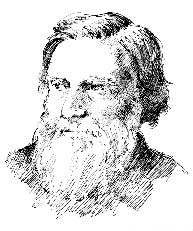Lancashire
HOUSE OF LANCASTER ∗ SCOUSERS ∗ MERSEY BEAT
∗ LIVER BUILDING ∗ TWO CATHEDRALS
∗ GLADSTONE AND HITLER ∗ HOTPOT
∗ GREATEST STEEPLECHASE
The Beatles, the most iconic English band in history.
LANCASHIRE FOLK
John Ruskin ∗ Donald Campbell ∗ Arthur Ransome ∗ Richard Tattersall ∗ Sir John Barrow ∗ Sir Richard Owen ∗ Sir Henry Tate ∗ Eric Sykes ∗ Bernard Cribbins ∗ Warren Clarke ∗ Louise Brown ∗ Richmal Crompton ∗ John Kay ∗ Sir Robert Peel
House of Lancaster
THE HOUSE OF LANCASTER descends from Edward III’s oldest surviving son John of Gaunt (his name comes from his birthplace, the Dutch city of Ghent). Monarchs of the House of Lancaster were John of Gaunt’s son Henry Bolingbroke who, as Henry IV, was the first King of England to have English as his mother tongue, his son Henry V and Henry VI. The emblem of the House of Lancaster was a red rose.
John of Gaunt’s younger brother was Edmund of Langley, the first Duke of York, whose emblem was a white rose, and it was descendants of these two brothers who fought for supremacy during the Wars of the Roses. The war was brought to an end when the Lancastrian Henry VII defeated the Yorkist Richard III at Bosworth Field in 1485. Henry then married Elizabeth of York, daughter of Edward IV, and joined the red and white roses to make the Tudor Rose.
The House of Lancaster survives as the Duchy of Lancaster, a personal property of the reigning monarch.
The office of the Chancellor of the Duchy of Lancaster is a useful tool by which the Prime Minister can bestow Cabinet rank on a Minister he wants in the Cabinet, but who has no specific portfolio.
The rivalry between Yorkshire and Lancashire continues today, although on a (slightly) less violent basis. The Wars of the Roses are still fought every year at the WORLD BLACK PUDDING THROWING CHAMPIONSHIPS held in Manchester, when Lancashire folk hurl black puddings at a stack of Yorkshire puddings to see who can dislodge the most. The shoot-out is apparently based on an occasion during the conflict when both sides ran out of ammunition and began pelting each other with food. Black pudding is made from cooked pig’s blood, pork fat, oatmeal and onions.
Liverpool
When the River Dee silted up and cut Chester off from the sea, LIVERPOOL grew from a small fishing village into one of the busiest ports of the world. At the end of the 19th century, over 40 per cent of the world’s trade was carried on Liverpool-registered ships, and even today, after half a century of decline, Liverpool is still the biggest English port after London.
A magnet for immigrants, especially from Ireland during the Great Famine, Liverpool is one of the most cosmopolitan of English cities, and Liverpudlians have a character all their own. They are sometimes referred to as ‘Scousers’, after a local dish, a type of stew called ‘scouse’.
Liverpool Music
Music is perhaps Liverpool’s most celebrated modern export. In the 1960s bands like GERRY AND THE PACEMAKERS, BILLY J. KRAMER AND THE DAKOTAS and THE SEARCHERS created the MERSEYBEAT SOUND, while the Beatles changed the pop music world for ever. THE BEATLES learnt their trade at the self-styled ‘most famous club in the world’, THE CAVERN CLUB, at No. 10 Mathew Street. The original club closed in 1973, but has since been rebuilt on the same site, using bricks from the old club, and re-opened in 1984.
In front of the Cavern Club is the LIVERPOOL WALL OF FAME, which pays tribute to Liverpool acts that have reached No. 1 in the English charts. The wall was unveiled in 2001 by the jazz singer LITA ROZA, 80, who was THE FIRST LIVERPUDLIAN AND THE FIRST WOMAN TO REACH NO.1, with ‘How Much is that Doggie in the Window?’ in 1953.
Other acts on the wall include ATOMIC KITTEN, CILLA BLACK, DEAD OR ALIVE, FRANKIE GOES TO HOLLYWOOD and MEL ‘C’ or ‘Sporty Spice’, who holds the record FOR MOST UK NO. 1SINGLES AS A FEMALE CO-WRITER (along with Madonna) and is THE ONLY FEMALE TO REACH NO. 1 AS A SOLO ARTIST AND AS PART OF A QUINTET, A QUARTET AND A DUO.
Liverpool Landmarks
Liverpool can boast quite a few English landmarks, perhaps the most recognisable of which is the ROYAL LIVER BUILDING on the waterfront. Completed in 1911, the Liver Building sports THE LARGEST CLOCK FACES IN ENGLAND. The clock was started at the exact moment that King George V was crowned in Westminster Abbey, 1.40 p.m. on 22 June 1911. The twin clock towers are each topped by a Liver Bird, one female, watching out over the sea, and one male, watching out over the city. The Liver Bird, probably based on a cormorant, has been a symbol of Liverpool since the 14th century, and used to carry in its beak a sprig of laver, an edible seaweed found along the coast from which Liverpool takes its name.
Roman Catholic Cathedral
Liverpool Cathedrals
Liverpool’s two great cathedrals are outstanding. The Roman Catholic cathedral, known affectionately as the ‘Wigwam’, was built in the 1960s and has 2,000 TONS OF STAINED GLASS, THE LARGEST DISPLAY IN ENGLAND.
The stupendous Anglican cathedral was designed by Giles Gilbert Scott when he was 22 years old. The first stone was laid in 1904, and although Scott worked on the building until he died in 1960, he never saw its completion. With work interrupted by two world wars, it took 74 years to build, finally opening in 1978. Liverpool Cathedral is not only ENGLAND’S BIGGEST CATHEDRAL, but THE LARGEST CATHEDRAL IN THE WHOLE OF CHRISTENDOM after St Peter’s in Rome. It has THE LARGEST CATHEDRAL ORGAN IN EUROPE, THE LARGEST GOTHIC ARCHES IN THE WORLD, and THE LARGEST BELL TOWER AND HEAVIEST PEAL OF BELLS ON THE PLANET. Liverpool Cathedral is breathtaking, big and beautiful, perhaps the greatest English building of the 20th century.
Just north of the cathedral is Rodney Street, a fine Georgian street, where Prime Minister WILLIAM EWART GLADSTONE was born in 1809, at No. 62.
From 1910 until 1914, Adolf Hitler’s half-brother ALOIS HITLER lived near the cathedral, in Upper Stanhope Street, with his first wife Bridget. Their son William Hitler was born there in 1911. Ironically the house was destroyed by a German air raid in 1942.
Lancashire Hotpot
LANCASHIRE HOTPOT is an economical dish of meat, sometimes beef, more usually lamb, mixed with kidneys and vegetables, covered with a layer of sliced potatoes, all cooked slowly in a large pottery hotpot. It was generally prepared for the workers when they returned from the cotton mills, but occasionally taken to the mill for consumption at the workplace. Oysters were often included when inexpensive and easily obtainable.
The Grand National
THE GRAND NATIONAL, run over 4½ miles (7 km) at AINTREE, north of Liverpool, is the world’s most famous steeplechase, and a highlight of the English sporting calendar. It was first run at Aintree as the Liverpool Grand Steeplechase in 1839, and the first winner, aptly enough, was a horse called Lottery.
The Aintree fences are made up of spruce from the Lake District, and include some of the most feared jumps in the world. The broadest is THE CHAIR, which is also the tallest fence, at 5ft 3ins (1.6 m). There was once a seat for the distance judge alongside, hence the name.
BECHER’S BROOK, the most dangerous fence on the course, got its name from Captain Martin Becher, a top jockey who was unseated there during the inaugural race, and had to take refuge in the brook while the rest of the field passed over – his only comment afterwards was ‘Water tastes disgusting without the benefit of whisky.’ The phrase ‘a Becher’s Brook’ has become a metaphor for a daunting challenge.
All at Sea
In 1904 the Grand National was won by a horse thought to have been lost at sea. In 1903 MOIFFA was being shipped to Liverpool from New Zealand when the ship on which he was travelling was wrecked in the Irish Sea, and the horse was feared drowned. The next day, a fisherman heard strange noises coming from a tiny uninhabited rock off the south coast of Ireland, and upon investigating found the exhausted Moiffa washed up on the beach – the horse had swum over 50 miles (80 km) to safety. MoiVa was reunited with his trainer and went on to Grand National glory the following year.
Unluckiest Loser
In 1956 the Queen Mother’s horse DEVON LOCH, ridden by Dick Francis, was way out in the lead and just 50 yards from the finish when he suddenly leaped an invisible fence and collapsed, with his four legs splayed out and the jockey still seated on his back. Although Devon Loch got up and completed the race, he was overtaken and beaten by ESB. No one knows why Devon Loch collapsed, but his jockey Dick Francis was so mystified that he retired to write his own bestselling mystery thrillers about horse racing – had he won the Grand National that day there would probably have been no Dick Francis novels.
Grand National Facts
The largest number of finishers was 23 in 1984, and the smallest number just two in 1928.
The youngest jockey ever to win the Grand National was 17-year-old Bruce Hobbs in 1938, on the smallest horse ever to win, Battleship; the oldest was 48-year-old Dick Saunders, on Grittar in 1982.
The most successful horse in Grand National history is RED RUM, the only horse to win three times, in 1973, 1974 and 1977.
Red Rum
The most successful jockey is George Stevens, with five wins in the 1860s and 70s.
The only horse to win the Grand National and the Cheltenham Gold Cup in the same year was GOLDEN MILLER in 1934.
Champion
Nineteen eighty-one saw the most courageous and unlikely Grand National triumph of all when BOB CHAMPION, who had been diagnosed with terminal cancer only two years earlier, rode ALDANITI, who had almost had to retire with a leg injury, to victory. Second was Spartan Missile, ridden by 54-year-old grandfather and amateur jockey John Thorne. The story inspired a film, Champions, starring John Hurt, in 1983.
Aintree was once also a motor racing circuit, host to one European and five British Grands Prix. It was at Aintree that STIRLING MOSS won his first Grand Prix, in 1955.
Well, I never  knew this
knew this
about
LANCASHIRE FOLK
John Ruskin
1819–1900
‘Remember, the most beautiful things in the world are the most useless: peacocks and lilies, for instance’ – John Ruskin
JOHN RUSKIN was a prominent art critic and social philosopher whose essays and writings had a huge influence on the thinking and institutions of the 19th century. He was born in London, the son of a rich wine importer, founder of the company that became Allied Domecq, and hence had the time and money to spend on his personal crusades. His last 30 years were spent at BRANTWOOD HOUSE beside Coniston Water, in the Furness district of Lancashire.
His three great passions were the paintings of Turner, Decorated Gothic architecture and the Pre-Raphaelites, the latter until his wife Effie annulled their unconsummated marriage so that she could run off and marry the pre-Raphaelite artist Sir John Millais.
While a Professor at Oxford, Ruskin became great friends with Hardwicke Rawnsley, and in 1875 he introduced Rawnsley to another of his friends, the social reformer Octavia Hill. Rawnsley and Hill, encouraged by Ruskin, formed the National Trust in 1896.
Ruskin’s writings about society, in which he argued that labourers should be seen as men, who needed enjoyment in their work, rather than soulless tools, were admired by reformers such as William Morris, the author Leo Tolstoy and Mahatma Gandhi. He put forward radical proposals on such diverse issues as a National Health Service, a minimum wage, old age pensions, public libraries and art galleries, and global warming, and early members of the Labour party claimed that John Ruskin was their greatest influence.
Ruskin is buried in the churchyard of St Andrew’s in Coniston, and Brantwood is now kept as a museum in his memory.
Donald Campbell
1921–67
In 2007 an extension was added to the Ruskin Museum to house the remains of Donald Campbell’s BLUEBIRD, the boat in which he died while trying to break his own world water speed record on Coniston Water in 1967.
Son of the world record holder Sir Malcolm Campbell, DONALD CAMPBELL set seven world water speed records between 1955 and 1964, when he reached 276 mph (445 kph) on Lake Dumbleyung in Perth, Australia. In that same year he had already set the land speed record of 403 mph (649 kph) at Lake Eyre, in Australia, becoming THE ONLY PERSON EVER TO HOLD BOTH THE WATER AND LAND SPEED RECORDS AT THE SAME TIME.
In 1967 on Coniston Water, where his father had set a world record of 141 mph (228 kph) in 1939, Donald attempted to be the first person to go over 300 mph (483 kph) on water, and had achieved 297 mph (478 kph) on his first run when, on his second run, at 303 mph (487.5 kph), his boat flipped over and broke up.
The wreck of Bluebird was recovered in March 2001 and in May that year Donald Campbell’s body was found. He was given a funeral in September 2001 and finally laid to rest in St Andrew’s churchyard in Coniston, not far from John Ruskin.
ARTHUR RANSOME (1884–1967), author of the Swallows and Amazons children’s books, is buried in the churchyard at RUSLAND. Ransome settled in the Lake District in 1929 and set his stories around Coniston Water and Lake Windermere. His second wife Evgenia, who is buried beside him, was Leon Trotsky’s secretary. They met when Ransome was covering the Russian Revolution in 1917 as a journalist.
Born in Lancashire
RICHARD TATTERSALL (1724–95), founder of Europe’s leading racehorse auction house, was born in HURTSWOOD, near Burnley.
SIR JOHN BARROW (1764–1848), travel author, First Sea Lord during the Napoleonic Wars and founder of the Royal Geographical Society in 1830, was born in ULVERSTON.
SIR RICHARD OWEN (1804–92), naturalist, known as the ‘father of modern palaeontology’, was born in LANCASTER. Founded the Natural History Museum and invented the word ‘dinosaur’ – from the Greek ‘deinos’ (monstrous) and ‘sauros’ (lizard).
SIR HENRY TATE (1819–99), sugar merchant and founder of the Tate Gallery, was born in CHORLEY.
Actors ERIC SYKES (1923), BERNARD CRIBBINS (1928) and WARREN CLARKE (1947) were all born in OLDHAM, as was LOUISE BROWN, THE WORLD’S FIRST TEST-TUBE BABY.
Born in Bury
RICHMAL CROMPTON (1890–1969), author of the Just William stories.
JOHN KAY (1704–80), inventor of the ‘flying shuttle’, which began the mechanisation of the weaving process.
SIR ROBERT PEEL (1788–1850) who, as Home Secretary, oversaw the formation of THE WORLD’S FIRST ORGANISED POLICE FORCE, the Metropolitan Police Force – known as ‘Peelers’ or ‘Bobbies’.


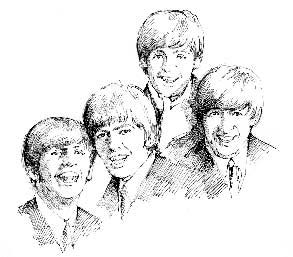



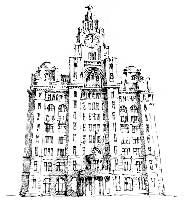

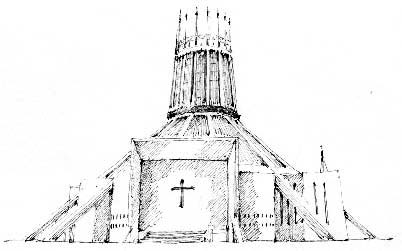

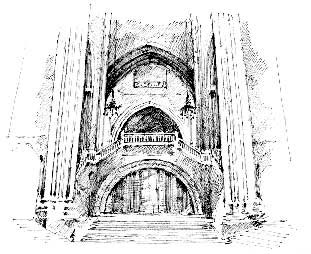
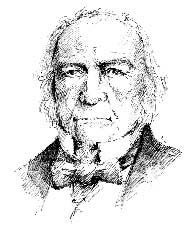




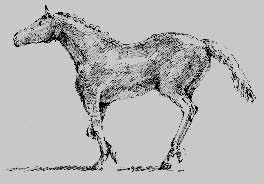

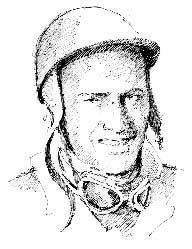
 knew this
knew this